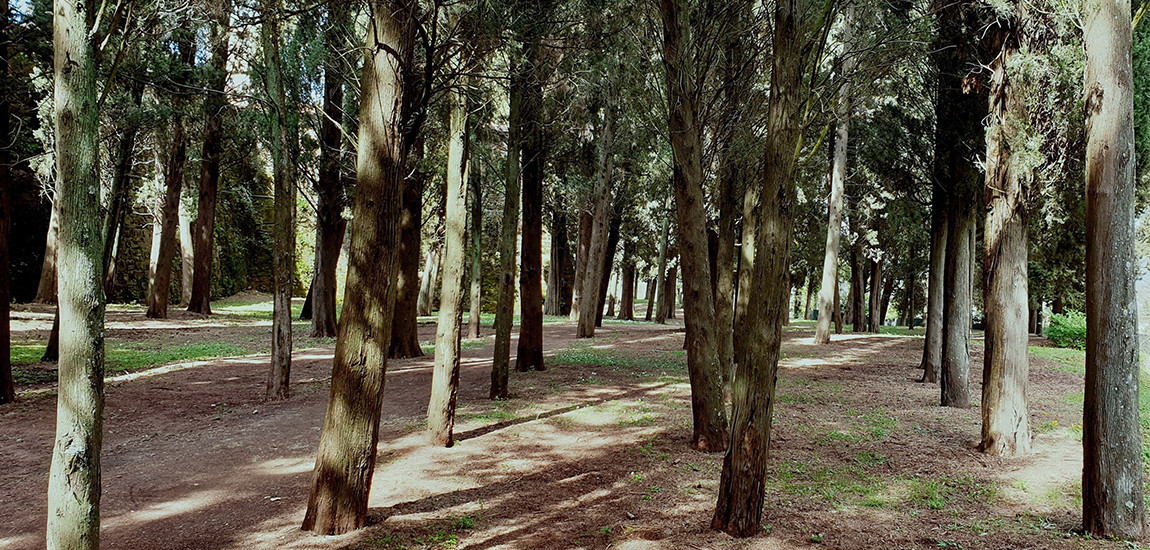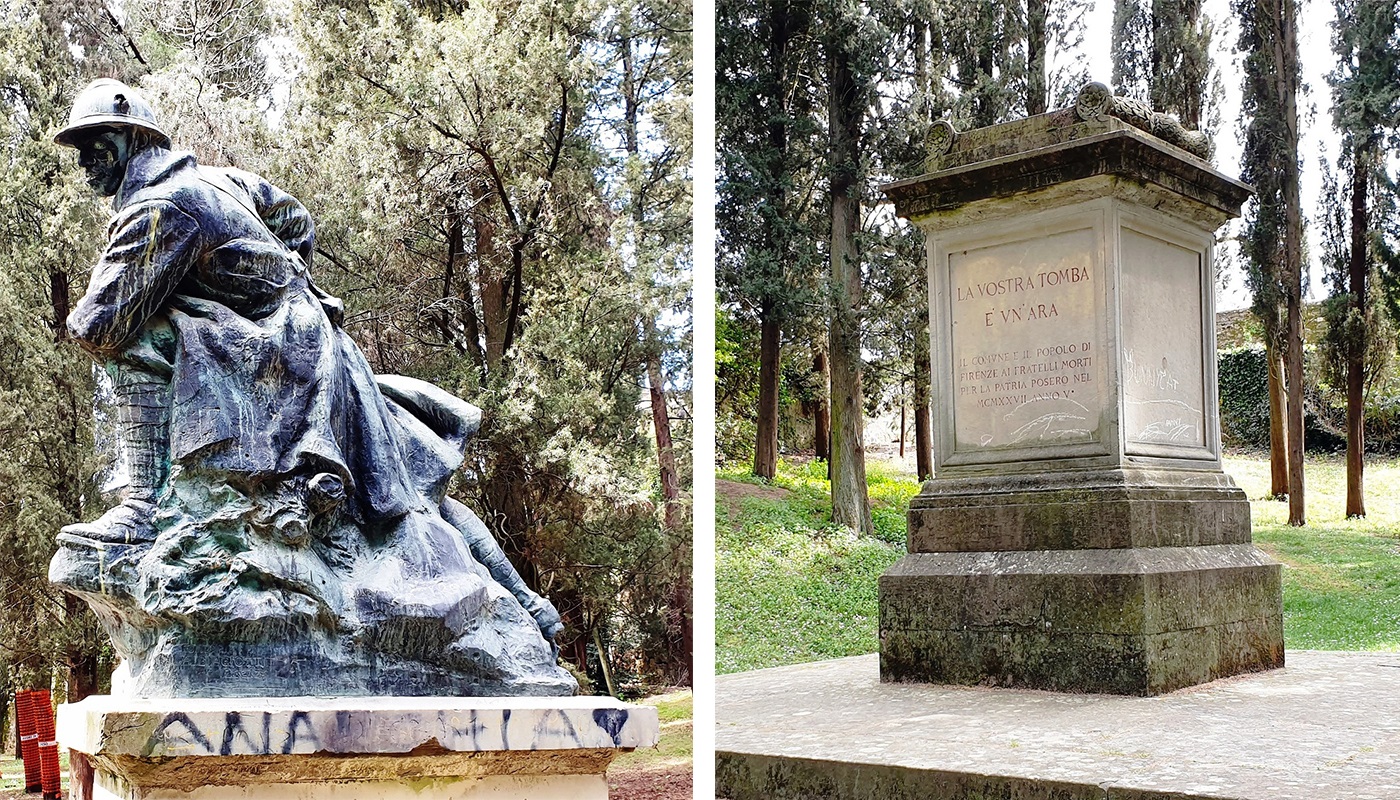
The gardens of Florence - The Remembrance Park of San Miniato a Monte
The cypress (Cupressus Sempervirens) has been part of the Tuscan landscape for millennia, particularly in the provinces of Florence and Siena, together with the olive tree and the vine. Originary of Iran, it thrived in the Mediterranean because it loves a hot and dry climate. Very hardy, it can live for thousands of years. Since ancient times it has been associated with cemeteries and avenues because its roots go down straight instead of horizontally like those of other trees, without disturbing what surrounds them, and this makes it the perfect tree to plant near burying places or roads.
Unfortunately,
the cypress has been fighting for a long time against a disease called Coryneum
Cancer (Coryneum Cardinale), a fungus that attacks the tree and makes it shrivel.
This process is favored when arrives the cold and humid climate that the
cypress does not like, consequently producing cracks in the wood in which the
fungus creeps. It seems that this disease arrived during the war, in 1944, when
the American army brought enormous quantities of weapons and ammunition to
Europe in wooden crates made of California cypress, affected by Corineo Cancer.
The Tuscany Region is working to eradicate this disease, with expensive
phytosanitary interventions and selections of trees resistant to parasites.
Right now it looks like the situation is improving, but there was a moment when
it seemed that the Tuscan cypress was destined to disappear, as more than 50%
of the plants were affected by this illness.
Behind the Church of San Miniato a Monte,
there is the Parco della Rimembranza,
a forest of cypresses, consisting of 3,000 plants. This is a rarity, as this
tree is generally used in avenues, cemeteries, or planted together with other
species. The park, crossed only by a small path, has a quite gloomy appearence.
Little sun penetrates this wall of dark foliage, where the cypresses have been
planted very close to each other.
This funereal atmosphere, however, reflects the sad reason why the park was created. Between 1922 and 1925, the fascist government ordered all local administrations, municipalities and provinces of Italy to create "votive forests": parks dedicated to the Italian soldiers who died during the First World War. In each municipality, monuments to the fallen were also erected. The regime paid great attention to the construction and planning of these structures of strictly nationalistic and militarist aesthetic and content. To make room for them, all the tombstones and monuments already present were destroyed.
This
Florentine "votive forest", with its 3,000 cypresses dedicated to just
as many Florentines who died in the war, was inaugurated in 1927. Two monuments
to the fallen, made by Angelo Vannetti, were placed insde it. The first, at the
beginning of the path, is an altar made of pietra serena - the stone of the
Renaissance - with a simple inscription: "Your tomb is an altar". The
second, made of bronze according to government guidelines, is visible only to
those who venture deep into the woods: the "Assaulting Infantryman",
in a warlike pose, with a dark expression and with a bayonet engaged.
Angiolo Vannetti (1881 - 1962) was an artist from Livorno who worked a lot
abroad and in the Italian colonies, and this work of his presents details of
great artistic value, not frequent for this type of monuments. In particular,
the bulky unbuttoned military coat that wraps the body of the infantryman is
made with considerable skill and realism. The play of the folds of the fabric,
whose heaviness can be perceived, in addition to providing a remarkable plastic
effect, helps to give dynamism to the entire figure.
This monument has been abandoned for years, vandalized, covered with pigeon droppings, the bayonet has been stolen, human features can hardly be seen on the face darkened by time.
The degradation and miserable aspect of this poor infantryman have somehow transformed its message. With the death of the nationalist rhetoric, it has become a sad monument to the thousands of poor wretches, torn from their lives and thrown into the hell of a war whose reasons they barely understood. Moreover, now evidently forgotten and humiliated through vandalism. The Italian losses in the First World War were 650,000 dead and 1,000,000 disabled and mutilated.
If you come to this place during a foggy winter day, to meet those 3000 souls, you will almost feel like you are entering the "dark forest" of Dante Alighieri's Divine Comedy:
Midway upon the journey of our life
I found myself within a forest dark,
For the straightforward pathway had been lost.
Ah me! how hard a thing it is to say
What was this forest savage, rough, and stern,
Which in the very thought
renews the fear.

The "Assaulting infantryman" and the Votive Altar



